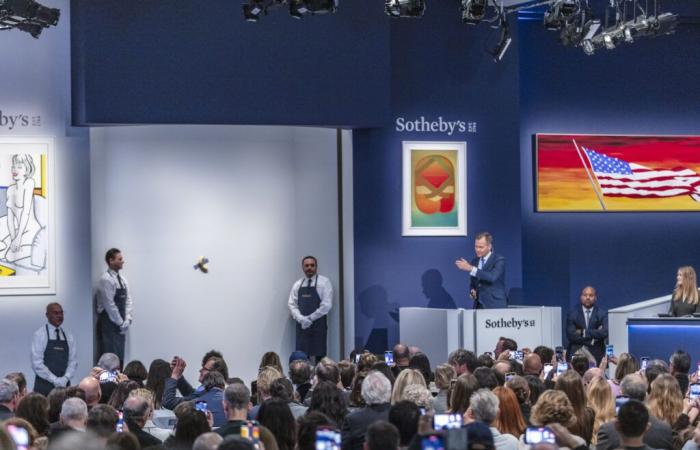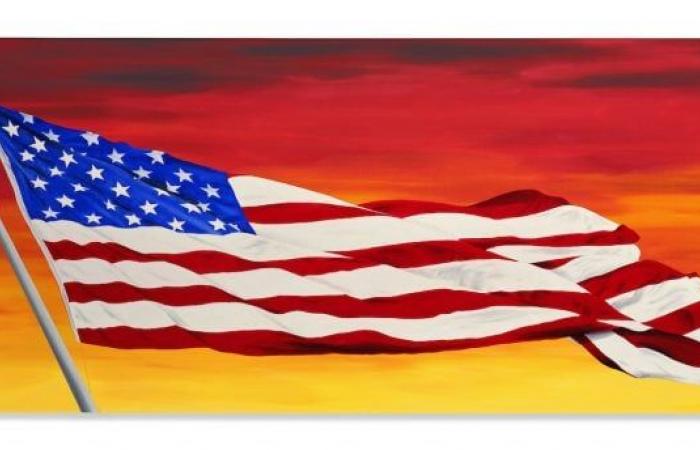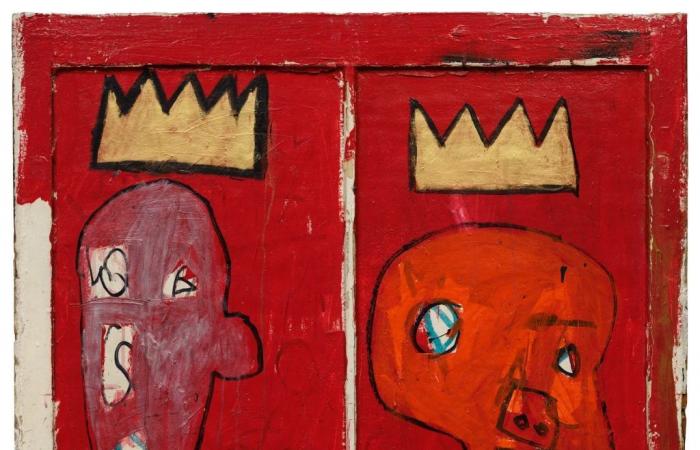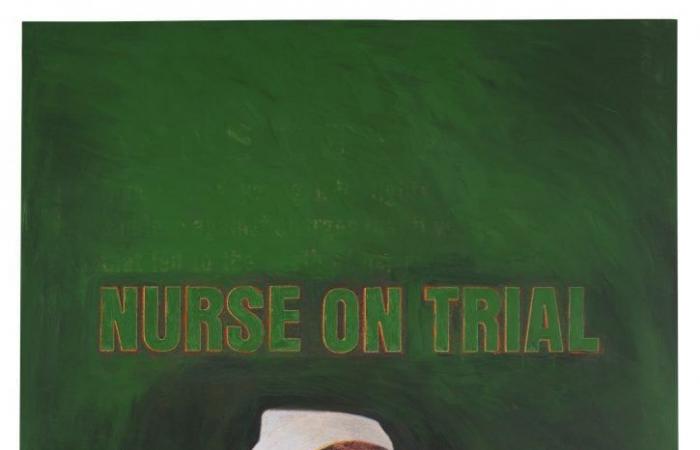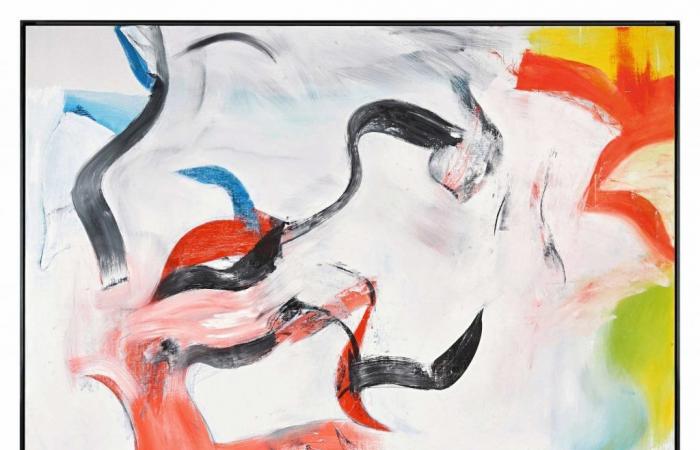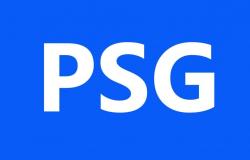Love it or hate it, Maurizio Cattelan’s famous fruit, Comedianstole the show at Sotheby’s New York last night, soaring past its estimate. But beyond the banana, the evening sale of ultra-contemporary and contemporary Art was an up-and-down event where many lots struggled to meet estimates. Auctioneer Oliver Barker seemed to be trying to coax bids from buyers who seemed quite confident in their bidding limits and were resolute in what they were prepared to spend.
Cattelan’s work was an expected outlier given the artist’s veritable memelord status following the duct-taped banana’s viral debut in 2019 at Art Basel Miami Beach, where it was selling for $120,000. The fruit easily bested its presale estimate of $1 million to $1.5 million, hammering at $5.2 million following a bidding contest that lasted just over six minutes. The winning bidder, Justin Sun, the founder of the cryptocurrency platform TRON, paid $6.2 million including buyer’s premium. It was the only lot of the sale for which buyers could pay with crypto. Sale attendees—myself included—crowded into the room to get a photo of the action.
“Comedian is Dada—a kind of masterpiece of the moment,” private dealer Andy Terner told me on my way out of the sale.
Artist Maurizio Cattelan's Comedian on view at Sotheby’s. Photo: John Nacion/Getty Images.
Viewed as an art-world trickster, Cattelan is best known for his sardonic hyperrealistic sculptures. The multimillion-dollar fruit marks the Italian artist’s third-highest auction price. The record goes to Him (2001), a slightly smaller-than-lifesize rendering of Hitler kneeling with his hands folded as if in penitence; the work sold for $17 million at Christie’s New York in May 2016.
The banana provided a welcome energy boost after Sotheby’s mixed result from its Modern sales on Monday night. Overall, last night’s evening sale pulled in a total of $112.3 million, including fees, although the hammer total of $96.4 million fell shy of its presale expectations of $108.4 million to $159 million. (Sale totals include fees, while estimates do not.) The results are a 64 percent drop from last year’s equivalent sales, which totaled $305.7 million. That sale had a much larger selection of lots: 64, versus just 40 this year—a 37 percent decrease in size.
One lot, a Richard Serra steel artwork made of beams arrange like “T” and leaning against a wall, was withdrawn midsale. It had an estimate of $700,000 to $1 million. The artist died earlier this year.
There were some surprising high-profile buy ins throughout the night, including the second most expensive lot, Jeff Koons’ Women in Tub (1988), which was estimated at $10 million to $15 million and backed by an in-house guarantee. Bidding opened at approximately $8.2 million but action crawled to a halt at $9.8 million—though no bids were actually observed at that level anywhere, except maybe the chandelier. In total, five works were bought in during the auction.
Jeff Koons, Woman in Tub (1988). Courtesy of Sotheby’s.
The highest price of the evening was achieved by Ed Ruscha’s long rectangular shaped Georges’ Flag (1999), which depicts a billowing American flag against the backdrop of a brilliant sunset. Sotheby’s called it “an operatic ode to Ed Ruscha’s career-long commitment to Pop, conceptualism, and his distinctly West Coast sensibility. “
It was estimated at $8 million to $12 million, and after Barker opened bidding around $5.5 million, it reached $13 million before the hammer fell. With fees, the final price was $13.6 million. The painting carried an irrevocable bid, meaning it was guaranteed to sell. It’s not clear whether the work ultimately went to its third-party backer since it did manage to clear the high estimate.

Ed Ruscha, Georges’ Flag (1999). Courtesy of Sotheby’s.
The next highest price of the night was for work by an artist seldom seen at any evening sale, never mind one focused on contemporary art: Stuart Davis. Works by the American modernist, known for his jazz-inspired proto-pop paintings, are more commonly seen in American art sales. His Contranuities (1963) was estimated at $12 million to $18 million, the highest estimate of the evening. It was hammered for $10.5 million, or $12 million with fees. It was far above the previous Davis record of $6.8 million set at Sotheby’s in 2018, for Rue Lipp (1928).
The market downturn of the last two years has yielded a “buyer’s market,” many have said. That was evident at this sale, where many bidders were staunch in their spending caps for the evening and some perhaps were even trying to score a bargain. A dealer, who spoke to me on the condition of anonymity, remarked on how lots such as Jean-Michel Basquiat’s Red Kings (1981) stalled around $6 million, the lowest end of its presale estimate (the final price clocked in at $7.2 million with fees). Given its importance and extensive exhibition history, it once might have easily earned $15 million, they said.
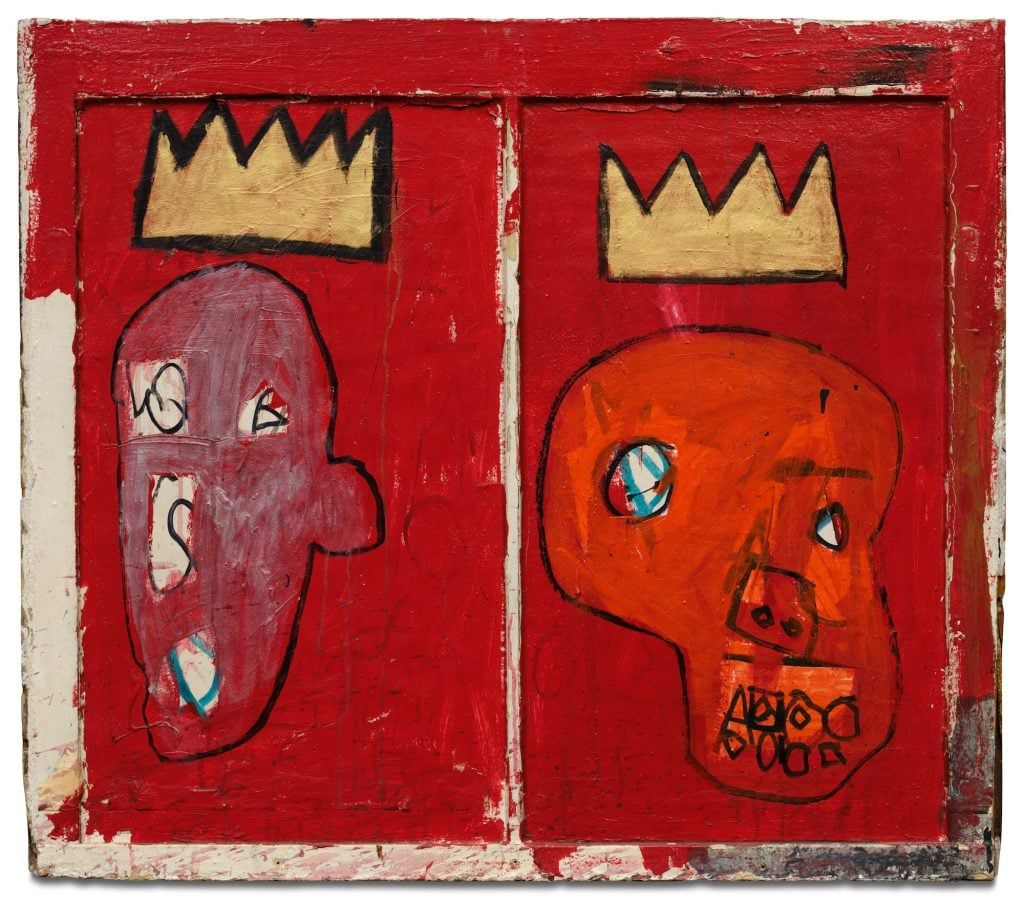
Jean-Michel Basquiat, Red Kings (1981). Image courtesy Sotheby’s.
It was a similar situation for Christopher Wool’s Untitled (1992), an enamel on paper word-block painting that says “And If You Don’t Like It Get The Fuck Out of My House,” which sold for $2.4 million with premium, just over its low estimate. That work was also backed by a third-party guarantee. The same dealer also noted—notwithstanding that this is not necessarily the same caliber of work—how far apart the current price is with some of Wool’s astronomical auction prices, including the $29.9 million record set for Untitled (Riot) (1990) in 2015 at Sotheby’s New York.
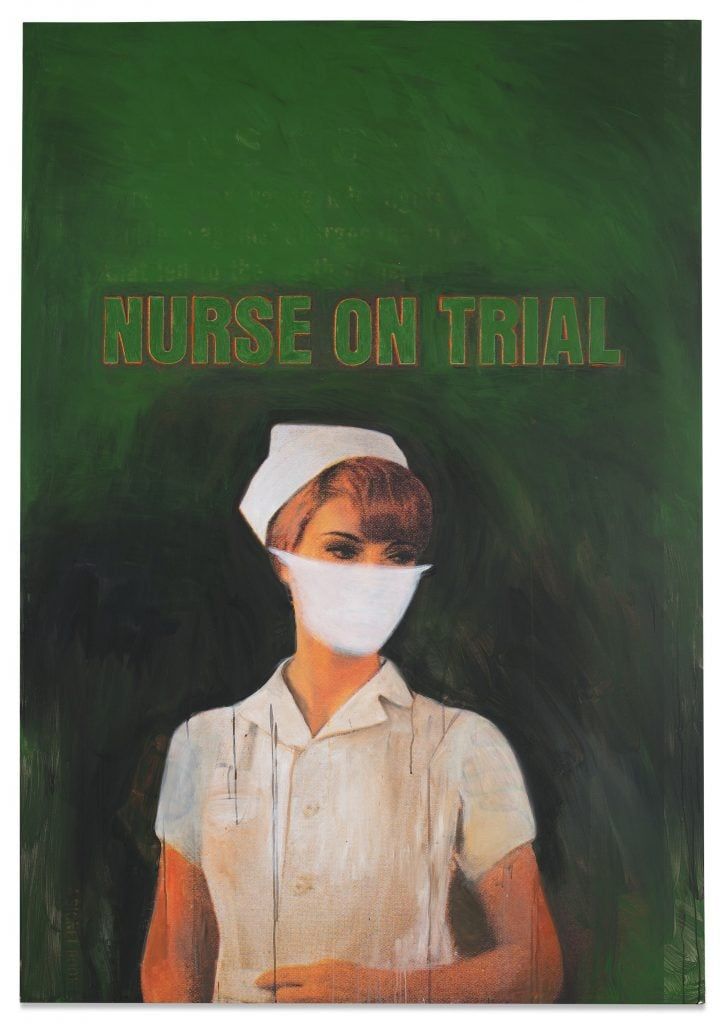
Richard Prince, Nurse on Trial (2005). Image courtesy Sotheby’s.
Richard Prince’s “Nurse,” paintings which are based on covers of old pulp fiction novels, have had their share of ups and downs in the marketplace. The work on offer at Sotheb’s, Nurse On Trial (2005), was given a more conservative estimate of $5 million to $7 million. That pricing is the same as when it last came to auction 10 years ago at Christie’s New York, where it sold for $5.7 million, according to the Artnet Price Database. It was also one of several lots backed by a third-party bid. Last night, it sold for $6.7 million, including fees.
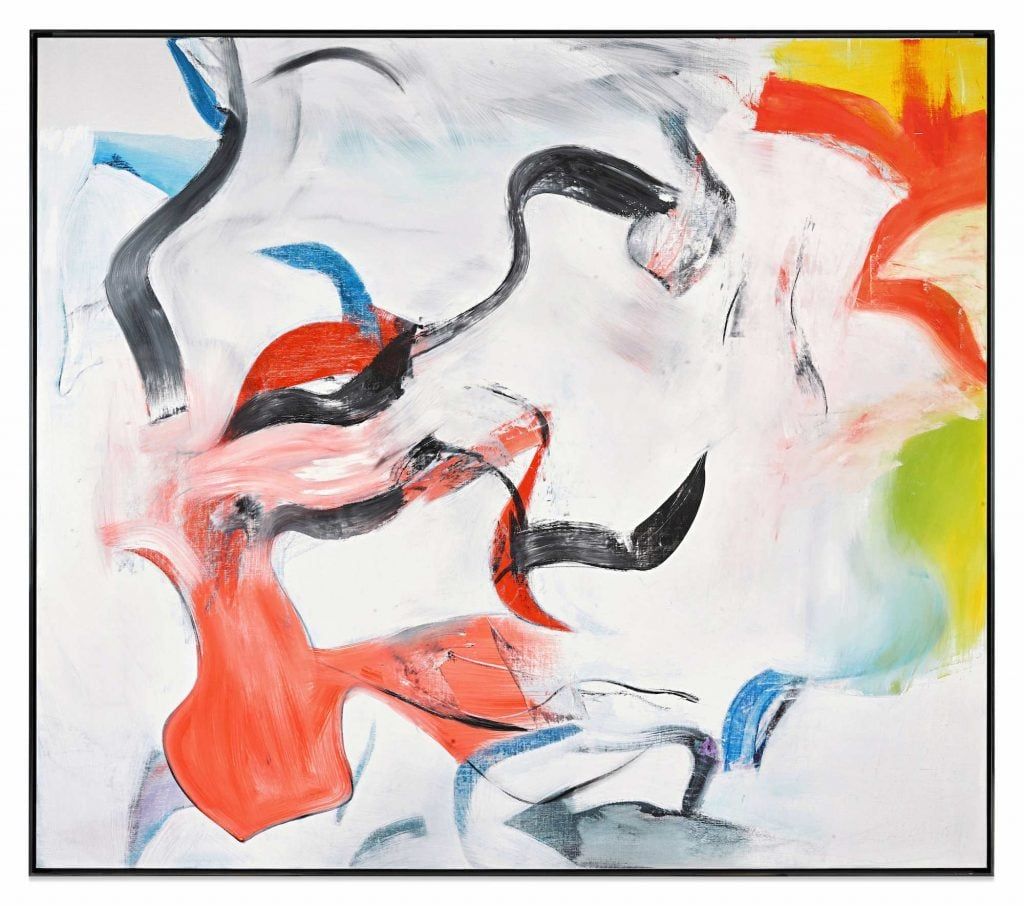
Willem de Kooning Untitled XXV (1982). Image courtesy Sotheby’s.
The third-highest price of the night was achieved for Willem de Kooning’s Untitled XXV (1982). It’s one of roughly 30 known paintings that de Kooning completed in 1982, which Sotheby’s experts describe as his wonderful year. Today they are considered de Kooning’s best compositions from the 1980s. It sold for $10.9 million, and was also guaranteed by a third-party or irrevocable bid.
Bidding was notably intense for a group of six works from the Dorothy and Roy Lichtenstein collection. They took in a total of $18.6 million compared with an estimate of $12.7 million.

